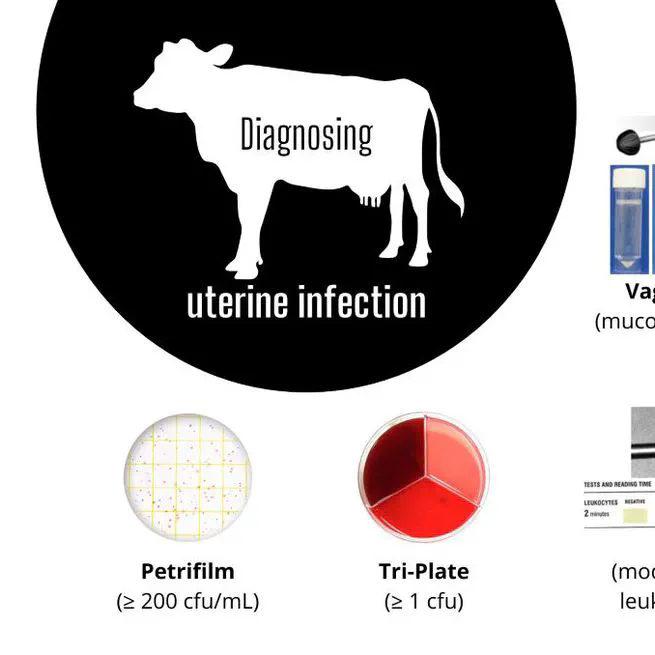This observational study found that elevated nonesterified fatty acids (≥ 160 µmol/L) 22 to 35 days before calving are strongly associated with postpartum metabolic and infectious disorders in dairy cows. This threshold could be used by veterinarians as an early monitoring tool to identify at-risk cows and implement preventive measures before calving.
Jul 15, 2025
This study found that combining an automated activity monitor with tail chalk improves the identification of true estrus in dairy cows, and estrus with higher intensity and longer duration. Tail chalk can serve as a marker of high-intensity estrus and enhance the accuracy of monitor alerts.
Jul 1, 2025

The laboraty test was the most accurate for detecting uterine infections in dairy cows, but it is not practical on farms. A simpler method called luminometry may be a useful alternative.
Jun 1, 2025
Treating dairy cows with reproductive diseases significantly improved their chances of getting pregnant again, compared to cows with these diseases that weren’t treated.
Mar 2, 2025
Two on-farm tests allowed to detect reproductive diseases in dairy cows, showing that cows with these conditions had lower chances of becoming pregnant compared to healthy cows.
Mar 1, 2025
Many dairy cows had long reproductive cycles not solely due to pregnancy loss, suggesting that extended luteal phase might be a common but overlooked feature in high-producing cows.
Oct 1, 2024
Laboratory and on-farm bacterial tests were fairly accurate at detecting udder infections in dairy cows before dry-off. However, a simpler test called luminometry did not perform well and isn’t reliable for this purpose.
Sep 1, 2024

People who tweeted about COVID-19 — especially those critical of public health measures — were less likely to follow mask and vaccination guidelines, suggesting social media can offer insights into public behavior.
Sep 1, 2024
Many cats living with COVID-19–positive people developed antibodies to the virus. Only a few cats had detectable viral RNA and those that did were more likely to show mild symptoms like sneezing.
Jul 1, 2024
Human and animal health sectors in Alberta worked together during a swine flu case, finding that trust, strong relationships, and good communication channels helped them respond quickly and effectively.
Apr 1, 2024